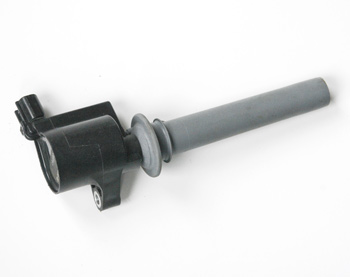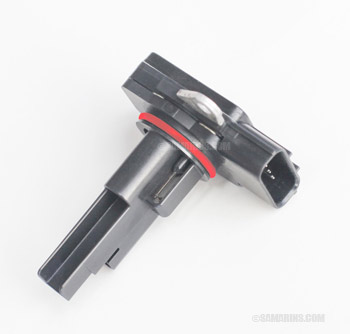Ignition coils: problems, replacement cost
Updated: October 05, 2022
An ignition coil is a part of the vehicle's ignition system. It converts the 12V battery power into high voltage in order to create a spark at the spark plug. The spark ignites the air/fuel mixture in the engine cylinders.Most modern cars have one ignition coil per cylinder. Typically, the coil is installed right over the spark plug, like in this Ford engine in the photo. This setup is called coil-on-plug.
In some cars, ignition coils for all cylinders are combined into one coil pack. In older cars with a distributor, a single coil is used for all cylinders. See this example of a single ignition coil in a Volkswagen air-cooled engine.
Ignition coil problems
Ignition coils are common to fail in many cars. Symptoms of a failed ignition coil include engine shaking and lack of power (misfiring). The Check Engine light may flash on and off or stay on solid. In cars with a single ignition coil or coil pack, a bad coil (or coil pack) can cause the engine not to start.Can you drive with a bad ignition coil?
A bad ignition coil often causes the engine to misfire. In some cars, driving with an engine that misfires can cause the catalytic converter to overheat and melt. Replacing the catalytic converter is expensive.We have also seen cases when a shorted ignition coil caused damage to the engine computer (PCM). Some car makers advise not to drive if your engine misfires; others recommend driving only in a very moderate fashion and have your vehicle checked out as soon as possible. Check your vehicle owner's manual for details.
Ignition component safety precautions
Ignition coils produce extremely high voltage that is dangerous for your health. Whenever working with ignition components, follow the safety precautions found in the service manual for your car.We posted a list of websites that offer paid access to service manuals for different cars at the bottom of this article: Check Engine Light: What to check first, repair options.
The first step when inspecting or replacing ignition coils is to disconnect the negative battery cable.
How a failed ignition coil is diagnosed
First, your mechanic will scan the engine computer for trouble codes. The trouble code may point to which cylinder misfired or even which coil has failed. For example, the code P0301 means that the cylinder number one misfires.Codes P0351-P0358 Ignition Coil "A" Circuit Primary/Secondary Malfunction (the last digit is the cylinder number) are the most common codes caused by bad ignition coils.
After retrieving the code, the mechanic will check the ignition coil wires and the connector and test the ignition coil following the manufacturers instructions.
Typically, the ignition coil inspection includes measuring the resistance between specific ignition coil terminals. If the resistance is outside of specifications, the ignition coil must be replaced.
Ignition coils also replaced if they show cracks, traces of arcing or other damage.
Advertisement
Sometimes to identify a failed ignition coil, mechanics swap the suspected bad coil with a known good one from a different cylinder, and then see if the misfiring moves with the coil or stays at the same cylinder.
For example, with the code P0302 (cylinder 2 misfire) a mechanic may swap the cylinder 2 and cylinder 3 ignition coils and run the engine for a short time. If the trouble code changes from P0302 to P0303 (cylinder 3 misfire) it means that the ignition coil that was originally at the cylinder number 2 is bad.
Ignition coil replacement
In most cars with a 4-cylinder or inline-6 engine, replacing a coil-on-plug ignition coil is a simple job (0.3-0.6 hours of labor plus the part).In some transversely-mounted V6 engines, an intake manifold must be removed to gain access to rear ignition coils (e.g., Ford Edge, Ford Escape V6, Nissan Murano, Toyota Camry V6).
This involves more labor and will costs more (1.5-2.5 hours of labor plus the part). In cases like this, your mechanic may recommend replacing all three rear ignition coils as a precaution.
If one of the ignition coils fails, it's also recommended replacing all spark plugs if they haven't been replaced in a while. New spark plugs will help the ignition coils last longer.



